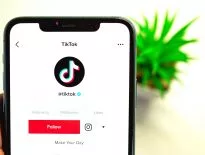Video content is plentiful all over the internet today. Some of these videos are open for the public and can be shared by other internet users either on an app or across different platforms.
Others videos may be confidential, containing sensitive information intended for a private group of people.
In the latter instance, you must encrypt videos uploaded online to an app or website. In addition, public videos must also be encrypted to protect copyright and prevent piracy.

Here is all you need to know about the process of video encryption.
What is Video Encryption?
Video encryption is the process of protecting videos posted on the internet from cybercriminals that might try to intercept them.
You can protect copyrighted content and sensitive or confidential videos from various attacks through video encryption, including brute force to the central system.
There are different types of encryption standards, but the major ones are DRM video encryption and AES encryption.
DRM Video Encryption
Digital Rights Management (DRM) focuses extensively on protecting video content from being viewed by an unintended audience.
It is the industry-leading solution in encrypting video and audio content on developed platforms like Netflix, Google Play, and Apple Music.
The DRM video encryption standard is widely used due to its highly secure security protocols. There is video encryption software from trustworthy sources available as SaaS solutions for video sharing and distribution platforms.
Videos that are DRM protected have to be accessed using an authentication process to verify the end-users legitimacy to view the content. In addition, using a variety of other security measures such as multi-factor authentication, video streaming platforms restrict access to private videos.
As a result, platforms that require a subscription fee to gain access to the videos contained therein often use DRM-protected technologies.
The underlying technology in DRM uses a scrambled key system different from other encryption solutions.
DRM differs because it does not give users the key to mitigating the risk of the authentication key being passed on to others.
The stream encryption key system used on DRM platforms adds an extra layer of security that secures the video-sharing and distribution platform from unprecedented attacks.
For example, in the unlikely event that someone gains access to the key, they won’t be able to use it to view the videos posted on the platform.
Since this technology is available from trustworthy vendors as an “off-shelf” solution, it has dominated the market. Even emerging platforms can use DRM video encryption to secure videos from being accessed or intercepted by unintended users.
Advanced Encryption Standard (AES)
The Advanced Encryption Standard was developed in the late ’90s with the National Institute of Standards and Technology (NIST) as an extension of the data encryption techniques that existed back then.
It was primarily used to protect sensitive information by government agencies and large companies like IBM. As time went by, this technology became more easily accessible to the public, bringing forth video encryption as you know it.
Although the AES security standard still has various other benefits and high-level data protection applications, various video distribution platforms implement this technology.
Some of the most common applications of AES video encryption include securing online visual learning material on the internet. Over-the-top media service or OTT providers also implement this security measure with a combination of other cybersecurity measures.
Even the National Security Agency uses AES for video encryption and to protect other data.
AES video encryption uses a unique key to unscramble the data stored within its security packets. If the user does not have that key that can either be embedded on a login page code or a specific device, the data will be scrambled.
When others try to intercept the video encrypted with this encryption standard, they won’t be able to read the data.
This makes the Advanced Encryption Standard a top-level measure to secure personal or confidential videos on the internet.
There are other similar methods like AES & DRM that are newer in the market, like the Modified Advanced Encryption Standard. Other methods include legacy systems such as the RC4 and Simplified Data Encryption Standard.
All methods related to this security measure can provide secure cloud hosting.
Do you even need it? Yes. It protects your videos from being downloaded 
The big question about video encryption is whether you need it or not.
Most video distribution platforms believe this depends on the type of audience and sharing features the platform should have. As a result, some public video-sharing platforms do not have any type of encryption configured and enabled on it.
However, the truth is all video sharing and distribution platforms should have a certain level of encryption configured and enabled.
For OTT media service providers, video encryption is a no-brainer, which should be the same standard for public distributors.
As much as you might not want to initiate a paywall for your videos, it is important to protect video from downloads.
DRM-protected videos have stream encryption preventing users from downloading the content as they please. This prevents piracy and copyright infringements for third-party video publishers using your platform.
Subsequently, third-party users who generate revenue might be more interested in using the platform you develop or manage.
The bottom line is, regardless of the kind of video distribution platform you are managing, encryption is necessary at all times to protect the content posted on it.
DRM Protect your Video Streams & Secure Cloud Hosting
Whether you are starting an over-the-top media service (OTT), live video streaming, or other visual content distribution platform, protecting it with DRM technology has great benefits.
Protecting video streams can be greatly beneficial in strengthening established paywalls on platforms such as OTT services. Online schools can also benefit in the same way since most eLearning platforms also have paywalls that grant paying users access to the video content they entail.
Additionally, DRM security can benefit cloud hosting service providers by securing both the hardware and software of the platform.
As a result, end-users will have more confidence in using the provided service, whether it is public video distribution or private, secure cloud hosting.
DRM security is versatile and can be used on other media platforms requiring similar encryption standards. This technology is the industry-leading solution for video encryption and was developed primarily to protect videos on the internet.
Does YouTube even encrypt the videos?

Although YouTube is one of the major video-sharing platforms, it did not start encrypting videos until recently.
Currently, only 97% of the connections on this platform are encrypted, and YouTube claims that this is due to some devices preventing encryption.
Despite these efforts of encrypting the videos, users on YouTube are still managing to intercept videos and save them to their local computer/smartphone drives through some simple apps available on various operating systems.
The downloading happens easily by using a third-party converting website or app which can intercept and decode the contents of the video to an MP4 file.
Therefore, the encryption YouTube uses is not good enough and needs to be improved further.
On the other hand, the platform does a good job when it comes to securing private videos on this platform.
Private videos are inaccessible since they are hidden from other users and can’t be intercepted. But for other content creators, it’s certainly a red flag and disappointing that unauthorized downloads keep happening and that too, very simply.
Secure your videos and enhance your content’s DRM protection with Cincopa’s encryption technology

A lot of time and effort goes into the digital media creatives you create.
At Cincopa, we make sure your content is not compromised at any level. With Cincopa’s video encryption technology, you can rest assured that no unauthorized person can access or download your valuable content.
Encryption is a security measure that ensures that your content is encrypted cryptographically through unique codes and cannot be accessed by unauthorized people. It prevents unwanted interception from stopping the downloads.









